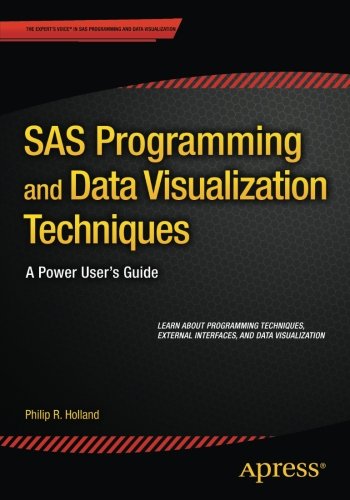

Most ebook files are in PDF format, so you can easily read them using various software such as Foxit Reader or directly on the Google Chrome browser.
Some ebook files are released by publishers in other formats such as .awz, .mobi, .epub, .fb2, etc. You may need to install specific software to read these formats on mobile/PC, such as Calibre.
Please read the tutorial at this link: https://ebookbell.com/faq
We offer FREE conversion to the popular formats you request; however, this may take some time. Therefore, right after payment, please email us, and we will try to provide the service as quickly as possible.
For some exceptional file formats or broken links (if any), please refrain from opening any disputes. Instead, email us first, and we will try to assist within a maximum of 6 hours.
EbookBell Team

4.0
6 reviewsSAS Programming and Data Visualization Techniques: A Power User’s Guide brings together a wealth of ideas about strategic and tactical solutions to everyday situations experienced when transferring, extracting, processing, analyzing, and reporting the valuable data you have at your fingertips. Best, you can achieve most of the solutions using the SAS components you already license, meaning that this book’s insights can keep you from throwing money at problems needlessly.
Author Philip R. Holland advises a broad range of clients throughout Europe and the United States as an independent consultant and founder of Holland Numerics Ltd, a SAS technical consultancy. In this book he explains techniques—through code samples and example—that will enable you to increase your knowledge of all aspects of SAS programming, improve your coding productivity, and interface SAS with other programs.
He also provides an expert’s overview of Graph Templates, which was recently moved into Base SAS. You will learn to create attractive, standardized, reusable, and platform-independent graphs—both statistical and non-statistical—to help you and your business users explore, visualize, and capitalize on your company’s data. In addition, you will find many examples and cases pertaining to healthcare, finance, retail, and other industries.
Among other things, SAS Programming and Data Visualization Techniques will show you how to:
SAS Programming and Data Visualization Techniques prepares you to make better use of your existing SAS components by learning to use the newest features, improve your coding efficiency, help you develop applications that are easier to maintain, and make data analysis easier. In other words, it will save you time, money, and effort—and make you a more valuable member of the development team.
What youll learn
SAS programmers wanting to improve their existing programming skills, and programming managers wanting to make better use of the SAS software they already license.
Table of Contents